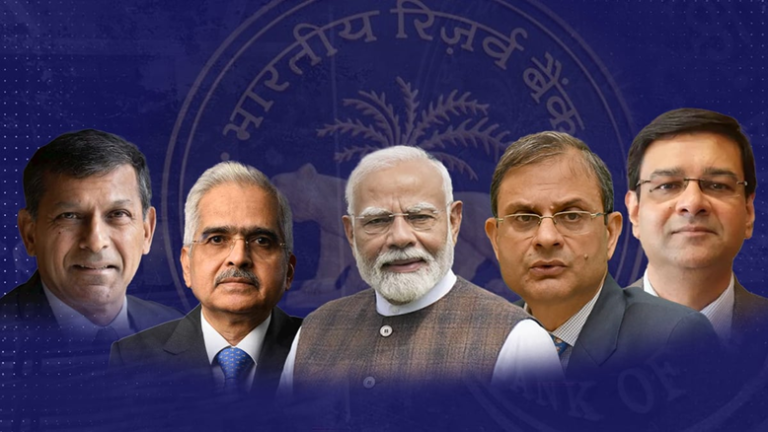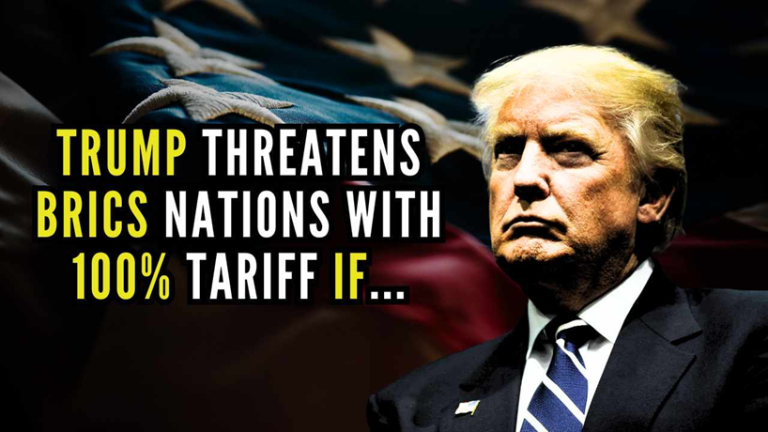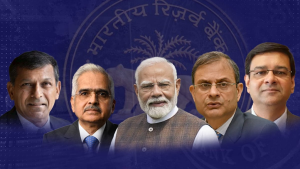Government working on giving shape to new air defence command by October: Sources
- The defence ministry is likely to make an announcement in October on setting up of a new air defence command under the broad principle of convergence among the three services, people familiar with the development said on Thursday. The new air defence command will handle certain air assets like missiles of the Indian Army, they said.
- A high-level committee was appointed earlier this year to frame contours of the new air defence command with a focus on ensuring jointness among the three services.
- The initiative was part of Chief of Defence Staff Gen Bipin Rawat’s mandate to redesign all existing military commands to help them effectively deal with all future security challenges.
- It is learnt that the air defence command is likely to base in an area under the IAF’s Delhi-headquartered Western Command or its Central Command headquartered in Prayagraj in Uttar Pradesh.
- The Air Defence Command will bring all the air assets of the IAF, the Indian Navy and the Indian Army.
- In one of his first decisions, Chief of Defence Staff Gen Rawat in January issued directions to prepare a roadmap by June 30 to create the Air Defence Command to further enhance security of India’s skies.
- The move was part of efforts to bringing in tri-services jointness and synergy include setting up of common “logistics support pools” in stations where two or more services have their presence.
- In the last few months, Gen Rawat has held a series of meetings with the IAF brass in giving shape to the air defence command.
- Gen Rawat took charge as the country’s first Chief of Defence Staff on January 1 which was seen as a watershed moment for India’s military planning to bring in convergence among the three services.
- The newly created department of military affairs (DMA) under Gen Rawat is coordinating implementation of all the futuristic projects including redesigning of existing commands.
- The DMA is also working on a proposal to have a peninsula command which is likely to be formed by merging the Indian Navy’s eastern and western commands.
- As per plan, the tri-services command under a naval commander will have air assets as well as support of the Army, and it will take care of entire responsibility of maritime security challenge in the Indian Ocean Region.
PM Modi addresses seminar on Atmanirbhar Bharat in Defence manufacturing
- The Prime Minister Shri Narendra Modi addressed the seminar on Atmanirbhar Bharat in Defence Manufacturing via Video Conferencing yesterday. Stressing on the need to become Atmanirbhar in Defence Manufacturing, the Prime Minister said our aim is to boost defence production, develop new technology and give significant roles to private players in the defence sector.
- Complimenting Defence Minister Shri Rajnath Singh and his entire team for working on a mission mode and taking relentless efforts, the Prime Minister said that the objective of achieving self-reliance in defense production will definitely gain momentum from yesterday’s seminar.
- The Prime Minister said when India became independent, it had a great potential and ecosystem for defense production in India but for decades no serious efforts were made. The Prime Minister remarked that the situation is now changing, continuous and persistent efforts are being undertaken to bring about reforms in the defence sector. He enumerated several concrete steps undertaken in this direction such as improvement in licensing process, creating level playing field, simplification of export process.
- PM remarked that a sense of confidence in the defense sector is essential for building a modern and self-reliant India. Decisions such as appointment of CDS, which were pending for decades have been taken now, which reflects confidence of New India. Appointment of Chief of Defence Staff has resulted in better synergy and coordination among the three forces and has helped in the scaling up of defence procurement. Similarly, he highlighted that opening of defence sector by permitting 74% FDI via automatic route reflects the confidence of new India.
- The PM said steps such as earmarking a part of the capital budget for domestic procurement, 101 items for domestic procurement will encourage and give a fillip to domestic defence industries. He also said that the Government is working on speeding up the procurement process, streamlining the system of testing etc. Speaking about Corporatization of Ordnance factories, PM said once completed it will strengthen both the workers and the Defence sector.
- Emphasizing on the need for technology up-gradation for self-sufficiency in modern equipment, the Prime Minister said that in addition to DRDO, Government is encouraging Research and Innovation in the private sector and in academic institutions as well.
- Highlighting that the Government has been working on the mantra of Reform, Perform, and Transform, the Prime Minister said major reforms are underway in areas of Intellectual Property, Taxation, Insolvency and Bankruptcy, Space and Atomic Energy.
- On the infrastructure initiatives, the Prime Minister spoke about two defence corridors underway in Uttar Pradesh and Tamil Nadu. He said the state-of-the-art infrastructure is being built in collaboration with the state government of Uttar Pradesh and Tamil Nadu. An investment target of 20 thousand crores in the coming 5 years has been set for this.
- PM observed that the iDEX initiative which was launched to encourage entrepreneurs particularly those associated with MSME and Start-ups, is also getting positive results. Through this platform, more than 50 start-ups have developed technology and products for military use, he noted.
- The Prime Minister said that the goal is to build a capable India to make the Global Economy more resilient, more stable and to bring peace in the world. This is the idea behind Atmanirbharta in Defence Manufacturing. India has the potential to become a reliable supplier of defence equipment to many of its friendly nations. It will strengthen India’s strategic partnerships and strengthen India’s role as a “net security provider” in the Indian Ocean region, the PM said.
- He said feedback and suggestions received on the Defence Production and Export Promotion Policy Draft will help in implementing this policy at the earliest.
- PM concluded by saying that collective efforts will help in releasing our resolve to become self- reliant, to become an Atmanirbhar Bharat.
Kavkaz 2020: All you should know about the military exercise, India will attend on Russia’s invite
- India’s tri-services contingent of around 200 personnel to take part in a multi-lateral Kavkaz-2020 exercise in Southern Russia in September along with troops of China and Pakistan and several other countries.
- KavKaz 2020 will take place on 15-26 September at Donguz training ranges in Russia’s Orenburg.
- Reports say that the Indian contingent might include 160 personnel from the army, along with 40 troops of the Indian Air Force and two Navy officers for the observers there. The exercise is being held in the Astrakhan province of Southern Russia where member countries of Shanghai Cooperation Organisation and Central Asian countries would be participating.
- Notably, India had earlier participated in this exercise with both China and Pakistan as part of it. Along with these four countries Kazakhstan, Kyrgyzstan, Tajikistan, Uzbekistan, Mongolia, Syria, Iran, Egypt, Belarus, Turkey, Armenia, Abkhazia, South Ossetia, Azerbaijan and Turkmenistan are set to take part in Kavkaz 2020.
- The Russian Embassy in India has tweeted that almost a month before the Kavkaz 2020 kicks off, “VI international military forum Army-2020 – first major defence expo this year – opened near Moscow. 1,500 companies, over 28,000 pieces of hardware and weaponry, 18 foreign delegations. Indian delegation is led by Raj Kumar, Secretary, Defence Production in India.
- Secretary (Defence Production) Shri Raj Kumar and Ambassador inaugurated the India Pavilion at #Army2020 outside Moscow and visited other pavilions showcased at the exhibition, including #IndiaRussia #Brahmos JV pavilion.”
- Russian KavKaz 2020 is strategic command-post exercise, which can be called war games. The word Kavkaz is derived as a modern variant of Caucasus or Caucasia, a region between the Black Sea and the Caspian Sea and mainly occupied by Armenia, Azerbaijan, Georgia, and southwestern Russia.
- Notably, in June, India and China also participated in the Victory Day Parade at Red Square in Moscow to mark the 75th anniversary of World War II amid escalating border-tension situation on Line of Actual Control (LAC) in Eastern Ladakh. Indian Defence Minister Rajnath Singh was present there along with the Chinese counterpart.
Defence minister launches app for online training of National Cadet Corps cadets
- Defence Minister Rajnath Singh on Thursday launched a mobile application to assist in online training of NCC cadets in the country. “In view of the restrictions imposed by COVID-19, training of NCC (National Cadet Corps) cadets has been affected adversely as it is mostly contact-based training,” the Ministry of Defence said in a statement.
- Since schools and colleges are not likely to open in the near future, it was felt that training to NCC cadets should be imparted utilising the digital medium, it said.
- The mobile app, called “DGNCC”, aims at providing NCC cadets all training materials, including syllabus, training videos and frequently asked questions, on one platform, the statement added.
- “The app has been made interactive by including a query option. By using this option, a cadet can post questions related to the training syllabus, and the same will be answered by a panel of qualified instructors,” it said.
- Along with Singh, Defence Secretary Ajay Kumar, Director General NCC Lieutenant General Rajeev Chopra and other senior civil and military officials of the ministry were present on the occasion.
- After the launch, Singh said on Twitter that this app would be useful to NCC cadets in digital learning and overcoming the difficulties posed due to restrictions on direct physical interactions in view of COVID-19.
- “The NCC imparts values of unity, discipline, service to the nation. I interacted with the NCC cadets during the launch of the app and also answered their questions. I wish them success and a bright future,” he added.
Indo-Japan Mutual Logistics Pact can enable Navies access to Djibouti & Andamans
- The Acquisition and Cross-Servicing Agreement (ACSA) expected to be concluded at next month’s annual summit between PM Narendra Modi and his Japanese counterpart Shinzo Abe would give the Indian Navy access to the Japanese military base in Djibouti and the Japanese Navy access to Andaman and Nicobar Islands.
- The ACSA (commonly referred to as Mutual Logistics Services Pact) would permit the Indian Navy access to a Japanese base in Djibouti. The Japan Maritime Self Defence Force (JSDF) would be permitted to use India’s military installations in the Andaman and Nicobar Islands. India currently has such pacts with the US, Australia, France and is likely to sign one with Russia later this year.
- Delhi has since long been keen to get a presence in Djibouti as part of its Indian Ocean outreach.
- Djibouti, wedged between the Gulf of Aden and the Red Sea, is a natural gatekeeper to a vital and extremely bustling sea-lane. The base in Djibouti is the JSDF’s first full-scale, long term overseas base.
- Similarly, Andaman and Nicobar is critical for the Japanese Navy in the Bay of Bengal region. The ACSA aims to expand Indo-Japanese strategic partnership amid an ambitious China whose aggression has unnerved many countries in Asia.
- Indo-Japanese defence ties have been growing over the past few years. At the end of the bilateral 2018 summit meeting in Tokyo attended by the two leaders, both countries had agreed to begin formal negotiations on ACSA.
- “The two leaders welcomed the joint exercise between each of the three services and the commencement of negotiations on the ACSA, which will enhance the strategic depth of bilateral security and defence cooperation,” according to the joint statement issued after the 2018 summit.
- The joint statement said, “recognising that enhanced exchanges in expanding maritime domain awareness (MDA) in the Indo-Pacific region contributes to regional peace and stability, they welcomed the signing of the Implementing Arrangement for deeper cooperation between the Indian Navy and the Japan Maritime Self-Defence Force.”
- ACSA will require the armed forces of India and Japan to help each other with logistic support, including food, water, billet, transport, petroleum, oils, lubricants, clothing, communications, medical services, base support, storage, use of facilities, training services, spare parts, repair and maintenance and airport and seaport services.
- The Summit is being planned in the backdrop of the Japanese Defence White Paper 2020 (JDWP) released on July 14, which had more criticism of China, than before. It is the first time that a JDWP has characterised China’s actions around the Senkaku Islands as “relentlessly seeking to affect Japan’s control over them at the time of the Covid crisis”.
- Widening the scope of Indo-Pacific partnership, including third country projects, are also on the cards. Japan has decided to increase its investments in two of India’s key neighbours –– Bangladesh and Myanmar.
- Increase in Japanese FDI into India, including Japanese companies planning to shift to India from China, and incentives for these business enterprises will be discussed by the two leaders at the Summit, sources informed.
- Simultaneously, India and Japan will work to have technology companies build platforms that help emerging nations put government services online, taking ideas from Delhi’s all-in-one digital infrastructure which allows access to various public services.
- Abe was scheduled to travel last December for the annual summit but had to postpone it due to protests in Guwahati. He had planned to visit Delhi in April which was postponed due to Covid.
Defence Ministry to release second list of banned imports to boost domestic production
- Defence Ministry will issue a second list of arms and ammunitions that will be subjected to an import ban. Expected to be released by the end of this year, this list will aim to further strengthen India’s own defence industry by using embargoes on imports.
- “A comprehensive list is in the making and would be issued by the end of this year,” a source in the central government told. The list will have a large number of items and the three services are being consulted for preparation of arms and smaller items which can be produced and procured from within the country itself.
- The first such list of negative arms imports was issued by the Defence Ministry on August 9. This list included a large number of high-tech items including artillery guns, submarines and light-weight combat aircraft.
- Defence Minister Rajnath Singh and Prime Minister Narendra Modi have reiterated time and again their objective to boost indigenous defence production and develop a robust military industry within India. This, they say, will not only contribute to economic growth but will also help in creation of jobs many of which are lost owing to placement of orders to foreign vendors.
- A number of indigenous manufacturers continue to urge the Centre to implement measures aimed at improving the defence production ecosystem within India.
- Earlier this year, concerned officials briefed the PM about the negative arms import list before the same was made public. This list introduced an import embargo on 101 items beyond a given timeline to boost indigenisation of defence production.
- It is estimated that contracts worth almost Rs 4 lakh crore will be allocated to the domestic defence industry within the next six to seven years as a direct result of this measure.
First S-400 unit to be delivered by end of 2021
- Russia has said that the first regiment of S-400 anti-air system will be delivered to India by the end of 2021 and that the delivery period of further batches could be compressed if required. India has ordered five regiments of the cutting-edge system that is designed to take down targets at a range of over 400 km.
- “The schedule of fulfilling the contract has been discussed in detail with Indian partners and the delivery of the first regiment is expected by the end of 2021,” the official representative of Russian Federal Service for Military-Technical Cooperation said at the Army 2020 expo at Kubinka, outside Moscow.
- “Further acceleration (of the timeline) is technically impossible, given the technology-related stages of production, acceptance trials and transfer of the equipment,” the official representative added.
- Russia has said that there is an ongoing portfolio of defence orders worth $15 billion with India and that plans to start producing AK203 rifles at a factory in Amethi in Uttar Pradesh are underway while the acquisition of Igla-S air defence missiles should be completed soon.
- “There is a good order portfolio equal to about $15 billion. The production of AK203 at the joint venture is on the way. I hope that in the near future an agreement will be signed for the production and supply of Igla-S in the interest of India, especially since we have won the tender unconditionally.”
Massive Chinese build-up along Line of Actual Control
- Even as New Delhi and Beijing continue to hold talks over the military de-escalation in Pangong Tso and Depsang areas of eastern Ladakh, China is bolstering its military infrastructure in the Line of Actual Control (LAC) and has begun construction of massive habitat for a large troop formation, apart from road constructions and deployment of strategic missiles, sources said.
- “The Peoples Liberation Army (PLA) is building a brigade-size garrison at Gyantse in Tibet which appears to be meant for the ground forces. The construction was started after January 2020 and is likely to be completed by the spring of 2021,” said a source.
- The new garrison includes six battalion area headquarters and an administration area, and more than 600 vehicle and equipment sheds, the source added. Also, an artillery battalion is located around 14 km from Gyantse.
- An Army officer, on condition of anonymity, said: “The new brigade is located at a point from where it will be able to move to the western part of the Arunachal Pradesh and also to Sikkim.” Tawang, which lies in the western part of Arunachal Pradesh, has been a major point of contention between India and China. The officer added: “The images of June and July confirm that China is building connecting roads to the border areas at multiple points in the eastern sector.” Another source pointed out the deployment of missiles. “For the first time, a target acquisition radar associated with the S-300 has been installed at Malan Airfield under the Western Theatre Command (WTC),” the source said.
- The Chinese have deployed the missiles as air defence cover as their troops are out in open, said another senior army officer on the condition of anonymity. “Their plans are going ahead keeping both offensive and defensive military tactics in mind.”
- The tensions along the 3,488 km-long LAC have been high since the first week of May when the Indian troops and the Chinese PLA clashed at Finger 4 in the eastern Ladakh. There has been precautionary deployment by India all along the LAC.
- In the last few months, there have been multiple military and diplomatic level talks where both sides have agreed to resolve the issues peacefully, but the Chinese have not disengaged their troops from various locations even after the agreements in the meetings, said a source.
‘Solution must be predicated on honouring all agreements’
- A solution to the border row with China must be predicated on honouring all agreements and understandings without attempting to alter the status quo unilaterally, External Affairs Minister S Jaishankar has said, in a clear assertion of India’s position on the issue.
Several rounds of talks, pullback not achieved
- The two countries have been engaged in a stand-off since April over tensions along the Line of Actual Control (LAC) in the Galwan Valley of Ladakh. Several rounds of talks — military and diplomatic — have followed the June 15 violent stand-off but full de-escalation is yet to be achieved.
Ladakh face-off: India to order 2 more Israeli Phalcon ‘eyes in sky’ for $1 billion
- India is now finally going to seal the long-pending around $1 billion deal to acquire two more “Phalcon” airborne warning and control system (AWACS) aircraft from Israel, which has been derailed at least a couple of times in the past due to the high costs involved.
- Sources on Wednesday said the acquisition of the two AWACS, with the Israeli Phalcon early-warning radar system mounted on Russian Ilyushin-76 heavy-lift aircraft, is all set to get the final nod from the Cabinet Committee on Security (CCS) after extensive inter-ministerial consultations.
- The two new Phalcon AWACS, which will add to the three such aircraft inducted by the IAF in 2009-2011 under a $1.1 billion contract, will be delivered in three to four years. “They will be more advanced than the first three Phalcon AWACS with the latest upgrades,” said a source.
- The need for additional AWACS, which are powerful “eyes in the sky”, was acutely felt during the pre-dawn strikes at Balakot and the subsequent aerial skirmish with Pakistani fighters in February last year. The ongoing military confrontation with China in eastern Ladakh has further reinforced the operational requirement.
- AWACS or AEW&C (airborne early-warning and control) aircraft are critical in modern warfare because they can detect and track incoming fighters, cruise missiles and drones much before ground-based radars, direct friendly fighters during air combat with enemy jets, and keep tabs on enemy troop build-ups and movement of warships.
- Pakistan has 8-10 Chinese Karakoram Eagle ZDK-03 AWACS and Swedish Saab-2000 AEW&C. China, in turn, has well over 30, including Kong Jing-2000 “Mainring”, KJ-200 “Moth” and KJ-500 aircraft.
- India currently has just three Phalcon AWACS, with a 400-km range and 360-degree coverage,and two indigenous “Netra” AEW&C aircraft, with indigenous 240-degree coverage radars with a 250-km range fitted on smaller Brazilian Embraer-145 jets.
- A much more ambitious indigenous AWACS-India project worth Rs 5,113 crore was approved by the defence ministry in March 2015 for 360-degree coverage with indigenous AESA (active electronically scanned array) radars to be mounted on two Airbus A-330 wide-body jets. But this project will only now head to the CCS for clearance.
- The impending contract for the two new AWACS comes after the defence ministry decided earlier this month to also fast-track the Rs 3,500 crore “Project Cheetah” to upgrade its Israeli Heron drones with laser-guided bombs, air-to-ground anti-tank missiles and other precision-guided munitions as well as advanced reconnaissance capabilities.
- Israel is one of the top arms suppliers to the Indian armed forces. Indian acquisitions over the years range from Barak surface-to-air missile systems, Spyder quick-reaction anti-aircraft missiles and a wide array of drones and radars to Python and Derby air-to-air missiles, Crystal Maze and Spice-2000 precision-guided munitions.
Indian Armed forces committed to hand-hold domestic defence industry: Gen Bipin Rawat
- India’s armed forces are committed to hand-hold the domestic industry in developing next generation military platforms and equipment to make the country self-reliant in defence manufacturing, Chief of Defence Staff Gen Bipin Rawat said on Thursday. In an address at a seminar on promoting the domestic defence industry, Gen Rawat said nothing will give the armed forces greater satisfaction than fighting and coming out victorious in wars with indigenous technology and equipment.
- India has been facing numerous security threats and challenges and they are going to increase manifold in the future, Gen Rawat said, adding that the country has the capability to deal with them.
- “Nothing will give us greater satisfaction than fighting and coming out victorious in wars with indigenous technology and equipment,” said the chief of defence staff, adding that the armed forces do not have any bias towards imported equipment.
- Gen Rawat also elaborated on various policy initiatives by the government to promote the domestic defence industry and said the strength of the Defence Research and Development Organisation (DRDO) should be be utilised in bringing out new equipment and technologies.
- “The armed forces are committed to hand-hold the industry,” he said. The government has already outlined its broad roadmap to make India a hub of defence manufacturing and has been taking policy initiatives to promote the domestic defence industry.
- On August 9, Defence Minister Rajnath Singh announced that India will stop import of 101 weapons and military platforms like transport aircraft, light combat helicopters, conventional submarines, cruise missiles and sonar systems by 2024.
- In a related development, the DRDO on Monday identified 108 military systems and subsystems like navigation radars, tank transporters and missile canisters for the domestic industry to design, develop and manufacture.
- The premier organisation said it will also provide support to industries for design, development and testing of these systems on a requirement basis.
- It has set a target of next year in developing the 108 systems and subsystems.
- India is one the largest importers of arms globally. According to estimates, the Indian armed forces are projected to spend around USD 130 billion in capital procurement in the next five years. The government now wants to reduce dependence on imported military platforms and has decided to support the domestic defence manufacturing.
- The Defence Ministry has set a goal of a turnover of USD 25 billion (Rs 1.75 lakh crore) in defence manufacturing in the next five years that includes an export target of USD 5 billion (Rs 35,000 crore) worth of military hardware.
Thai Envoy Announces the Royal Thai Army’s Purchase Of 600 Tata Motors Defence Trucks
- When the Prime Minister said to go ‘vocal for local’, he also meant that products be made competitive vis-a-vis global brands.
- Tata Motors – India’s leading auto brand – seems to have solidified the brand’s stance for the ‘Vocal for Local’ initiative, by manufacturing high-end military support vehicles not just for the country, but one that fits the purpose of international defence deals.
- More recently, the Thai ambassador to India lauded India’s Atmanirbhar Bharat initiative by announces the purchase of 600 Tata motors military trucks.
- Chutintorn Sam Gongsakdi tweeted saying, ‘Atmanirbhar Bharat: The Royal Thai Army is in the process of completing its purchase of over 600 TATA LPTA military trucks. They are rugged & easy to maintain. Fit for purpose. Fit for service of the nation’.
- According to Motoroids report, Tata Motors has been a prime defence supplier to the Armed and Paramilitary Forces of the country for a long time now. The Group’s history with the Defence sector goes way back to the 1940s.
- Apart from being a leading supplier of mobility solutions to the Indian Army, Navy, Air Force and various Paramilitary forces, the company also exports its range of specialized Defence vehicles to SAARC, ASEAN, African nations and the UN peacekeeping forces in conflict zones in Africa.
- Chutintorn Sam Gongsakdi, in his tweet about the military purchase, ended up making an error of posting the Flag of Niger instead of India to indicate the deal.
- After people online pointed out that he used the wrong flag, Sam Gongsakdi, immediately posted an apology saying ‘Sorry. It is so small, I thought the detail was lacking. I actually checked before choosing’.
- Tata Motors, India’s largest vehicle manufacturer by revenue, is readying a range of sophisticated combat, tactical, logistical and armoured vehicles including high-end missile launchers for the Indian defence forces.
- V S Noronha – vice-president (defence and government business), Tata Motors – told Business Standard earlier this year, “Tata Motors has been very proactive in the defence segment, so it is not that we wait for the order. We knew that somewhere down the line, there would be a better focus on indigenisation and keeping that in mind, we went ahead and developed the (LPTA 5252) 12X12. They are the military versions of the Prima truck.”
- Tata Motors’s product line-up includes bullet-proof troop carriers, armoured buses, mine protected vehicles, mobile hospital, water bowser and even unmanned aerial vehicle launchers, among other things.
REVIEW QUESTIONS
- KavKaz 2020 will take place on
- 15-26 September
- 01-12 September
- 15-26 November
- 01-12 November
ANSWER: A
- Kavkaz 2020 will take place at which area of Russia?
- Sevastopol Naval Base of the Black Sea Fleet
- Donguz training ranges in Orenburg
- Chernyakhovsk air base of Baltic Fleet
- Magadan Oblast in Nagayev Bay
ANSWER: B
- Which among these countries is does not take part in Kavkaz 2020?
- Kazakhstan
- Kyrgyzstan
- Uzbekistan
- United Arab Emirates
ANSWER: D
- Defence minister launches which app for online training of National Cadet Corps cadets?
- DG NCC
- NCC Portal of India
- Young NCC Minds
- HQ NCC
ANSWER: A
- The ACSA (commonly referred to as Mutual Logistics Services Pact) would permit the Indian Navy access to a Japanese base in
- Djibouti
- Philippines
- New Guinea
- Solomon Islands
ANSWER: A
- The Japan Maritime Self Defence Force (JSDF) would be permitted to use India’s military installations in the
- Lakshadweep Islands
- Visakhapatnam port
- Cochin port
- Andaman and Nicobar Islands
ANSWER: D
- Russia has said that the first regiment of S-400 anti-air system will be delivered to India by the end of
- 2020
- 2021
- 2022
- 2023
ANSWER: B
- India is now finally going to seal the long-pending around $1 billion deal to acquire two more which airborne warning and control system (AWACS) aircraft from Israel?
- Phantom
- Kamikaze
- Phalcon
- Heron
ANSWER: C
- The Israeli Phalcon early-warning radar system will be mounted on which aircraft?
- Ilyushin-76 heavy-lift aircraft
- Ilyushin-78 air-to-air refuelling aircraft
- Sukhoi Su-30 MKI fighter
- HAL Light Combat Aircraft Tejas
ANSWER: A
- Thai Envoy Announces the Royal Thai Army’s Purchase Of 600 Defence Trucks from which Indian company?
- Mahindra Group
- Hinduja Group
- Tata Motors
- Reliance Industries
ANSWER: C


















